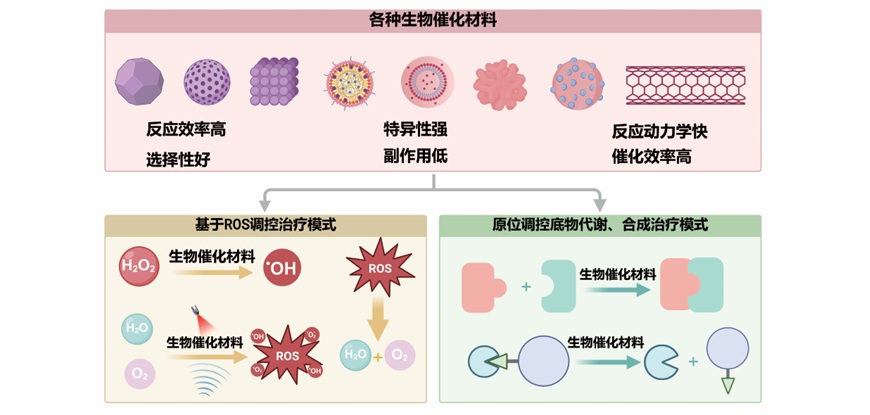Catalytic biomaterials represent a cutting-edge interdisciplinary research frontier that bridges biomimetic chemistry with
advanced materials science. By harnessing the intrinsic catalytic properties of engineered materials and incorporating precisely tunable
nanostructures, these systems offer transformative strategies to address the inherent limitations of conventional therapeutic modalities.
A key advantage of catalytic biomaterials lies in their finely controlled composition, morphology, and surface chemical functionalities,
which collectively enable the targeted modulation of critical biochemical reactions within pathological microenvironments. Such
modulation facilitates the localized and sustained generation of bioactive species, thereby enhancing therapeutic specificity and
efficacy while simultaneously minimizing systemic toxicity and adverse effects. This review systematically elucidates the fundamental
design principles and optimization strategies for constructing catalytic biomaterials, explores their mechanistic pathways in disease
modulation, and highlights their translational potential in clinical pancatalytic disease treatments. Furthermore, it identifies and
discusses the major scientific and technological challenges that must be addressed to advance the clinical integration of these
promising therapeutic platforms.

XIA Lili, WU Chenyao, FENG Wei, CHEN Yu
. Catalytic biomaterials: A toolbox for pancatalytic precision medicine[J]. Chinese Journal of Nature, 2025
, 47(3)
: 183
-189
.
DOI: 10.3969/j.issn.0253-9608.2025.03.004


